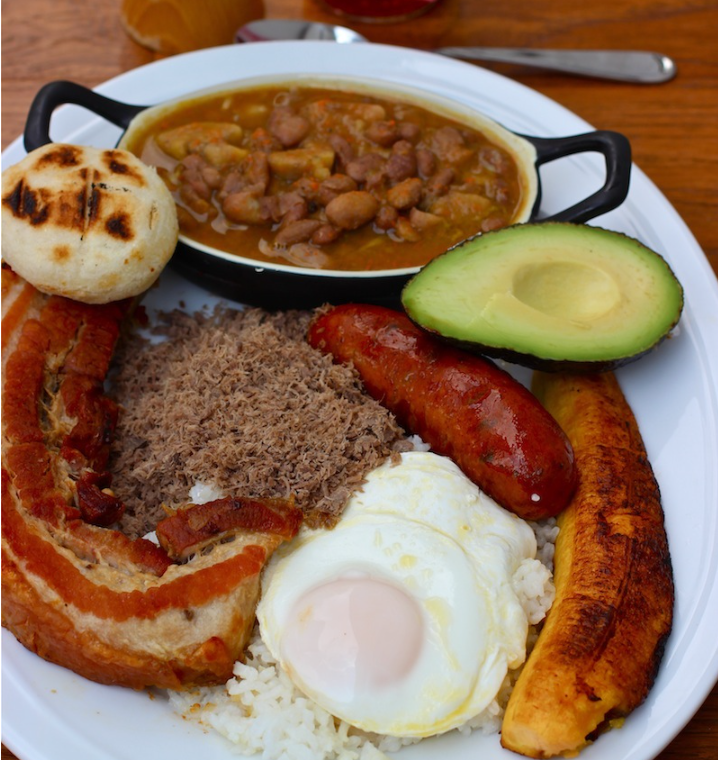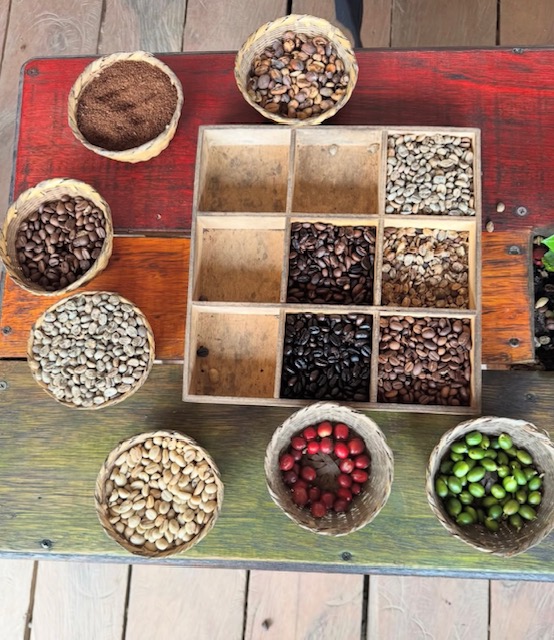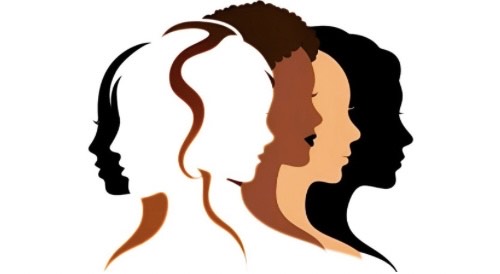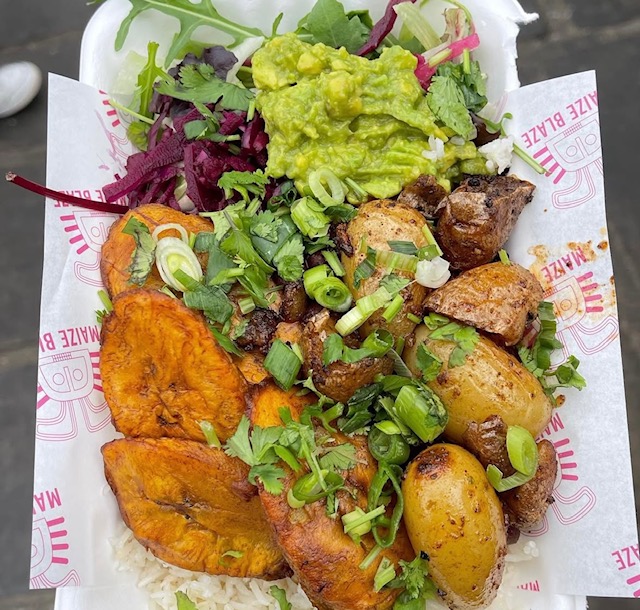When I arrived in Bogotá for the first time two years ago, football and music were on my mind; food and coffee, however, was not. Beyond arepas and empanadas, both of which I’d never tried, I had no idea what to expect from Colombian cuisine.
Where better to start, I thought, than with the iconic bandeja paisa, a traditional meal from the Andean region of the country consisting of beans, rice, arepa, chorizo, plantain, chicharrón, avocado and beef, this wholesome plate was first created to feed farmers and labourers to sustain them through long working days, and it remains an iconic dish that is enjoyed by all social classes across many regions of the country.

I was lucky enough to meet July Gomez while at a reggaeton dance night in the vibrant and beautiful city of Medellin, whom I spent the next four days with, experiencing the city through her, eating and dancing our way around together.
“You had never tried an arepa de hueva, so I had to take you where I grew up to go to the street vendors who make the best. An egg is cracked into the corn arepa, which is then double fried until it’s crispy and eaten with picante salsa if you can do the spice.”
“You have a sweet tooth,” July laughed, “so I had to take you to La Migueria — they do problems with arequipe, more jam, coconut flakes, and even sprinkles if you’re feeling ridiculous.” I was feeling ridiculous. Obleas, thin, wafer-like discs sandwiched with thick spreads, are Colombia’s answer to the sweet tooth’s craving. It was like nothing I’d tasted before: crispy and sweet but not too heavy. I still think about them often.
One thing I noticed quickly was the abundance of cheese in Colombian street food and not just in savoury dishes. Cheese sneaks its way into hot chocolate (chocolate con queso), pandebonos (warm, chewy cheese bread), and even dessert.
It became a bit of a game for me, spotting and subsequently trying the cheese. My go-to snack was the buñuelos golden cheese dough balls, crispy outside and soft within, best eaten straight from a street cart after a hearty dinner and before a la pola (beer!) or three.
I can’t talk about Colombia without talking about the café and coffee culture. Salento, in the heart of the coffee-growing region, is where I tasted some of the best coffee I have ever tried.
There is a traditional ritual around brewing the coffee, often strong and called ‘tinto’; it is strained through a traditional cotton cloth (colador), which acts like a filter. The social aspect of the coffee culture really stood out to me. People stop for it constantly at markets, in plazas, at home, and with neighbours, and it’s almost always shared.

In Bogotá, I remember sitting on a plastic stool in a plaza, sipping a tinto poured from a thermos by a street vendor, watching life go by. Even though I could only speak about 13 words of Spanish, I still felt a part of the city.
As July Gomez put it, “In Colombia, coffee is our beverage, a daily habit, a local economy, and part of the national identity.”
That felt true wherever I went. In small towns, coffee farms are often family-run, with delicious food, and many still pick and dry beans by hand. In the cities, there’s now a wave of speciality cafés, but even there, the culture around coffee remains relaxed and social.
When I first came to Colombia, it was football and music I was chasing. But it’s the food that stayed with me. Not just the dishes, like arepas de huevo, ajiaco, problems, tamales, and Tinto, but also the way they are ingrained in daily life and the identity of this beautiful country.
Eaten on plastic stools, shared from a hot pan from a street stall, passed around in paper cups. The flavours weren’t polished or trying to stand out; they were comforting and consistent; there was rarely a day I went without cheese or picante salsa. They just made sense of the place in a way no guidebook ever could.
Read more health and wellness stories here.


